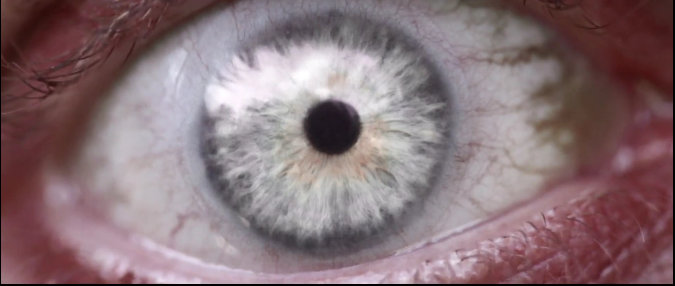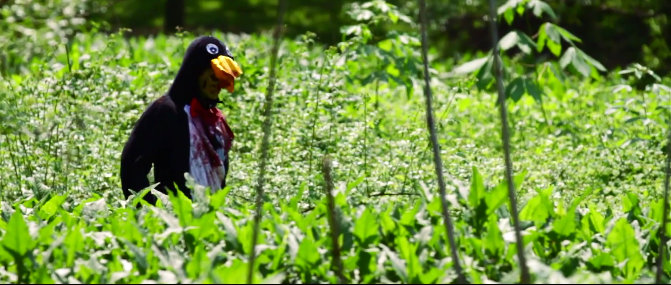No matter how cliché it sounds, the phrase “don’t judge a book by its cover” has complete relevance here. In this instance, though, don’t judge a film by its title. The zombie genre itself has, unfortunately, become a little stale and I understand the eye-rolling that may fall upon one when reading this title. That being said, I urge you to abandon any preconceptions you may have as Chris Russell’s “Zombie in a Penguin Suit” is a wonderfully directed visual tale. The end of humanity has never looked so beautiful.
It becomes clear early on in the film how the protagonist ended up being a zombie in a penguin suit. What’s more interesting though is how it makes us feel to see a lovable penguin mascot, cartoony and intended to entertain children, spewing blood and tearing the faces off humans with its teeth is jarring. Caught between a sort of Disney playful tale and the nightmare of a horror film, we are left with a peculiar combination of both – somewhere indefinable. Sigmund Freud describes something that is familiar and yet unfamiliar at the same time as the uncanny. The penguin mascot, for us, is something familiar but his murderous rampage, at least I hope, is not.
Along with this, perhaps the penguin figure reminds us of a childhood stuffed animal, representing something innocent and familiar, but then we see it bloodied and decaying from the inside and this puts us again in a hybrid, indefinable, and uncomfortable state.
While most modern zombie films pride themselves on quick pacing and action sequences, Russell takes the opposite, slow burning route and the results are stunning. The music is gorgeous; the soft piano keys with the haunting violin serve as the apocalypse’s backdrop. This, combined with the slower pace, solemnizes and sentimentalizes the event, making the terror and destruction of the world feel nearly elegant.
But the film doesn’t rest on aesthetics and encourages sympathy for the shuffling penguin as he roams aimlessly through a chaotic and then sometimes empty world. The crucifixion sequence really hammers in this idea as we see exactly what humans are capable of when faced with an unknown phenomenon and their own fear. At the end of the film, when the zombie stumbles into a still populated suburbia, it’s as if the humans have become the invaders of the zombie world and are now the enemy. Through forcing us to identify with an outsider and reflect on the destructive nature of humanity, the film refreshes the zombie genre.
Be sure to stick around for the credits. There is a quick clip of who the penguin mascot was before he became a zombie mascot and this further adds a haunting yet humanizing element to the overall story. But the film doesn’t quite end there and moves from humanizing him during the credits to absurdly penguinizing him in the last shot after the credits so watch to the last frame.
— Jon Dewar
Jon Dewar is a grad student at University of New Brunswick, Fredericton and is working towards a degree in education. He is an avid film fan, interested in both film analysis and filmmaking. Some of his inspirations include directors such as Paul Thomas Anderson, Steve McQueen, and Martin Scorsese. Jon has written numerous screenplays and is working towards eventually producing some of these projects.




Bizarre how beautiful this is. I wonder what kind of budget they had. It feels epic for a short. And shot so beautifully. Thanks for the article Jon. And thanks for sharing the film.
I love this so much! Gorgeous and haunting and heartbreaking and funny as hell on earth; which ain’t so funny when you think about it.
Excellent, Jon. Nicely written. Once again a movie that reminds me of Rob’s Christmas selection with the trees and rivers of blood. I like how a good arc of frothing blood enhances any scene.
But it’s true. You do feel a certain sympathy/empathy for the zombie penguin at the end. Hilarious.
Thanks.
I loved this movie but I never understood that the ending is actually supposed to still be a part of the story/movie, instead of just the actor playing with a kid during a break in filming. Is this true?